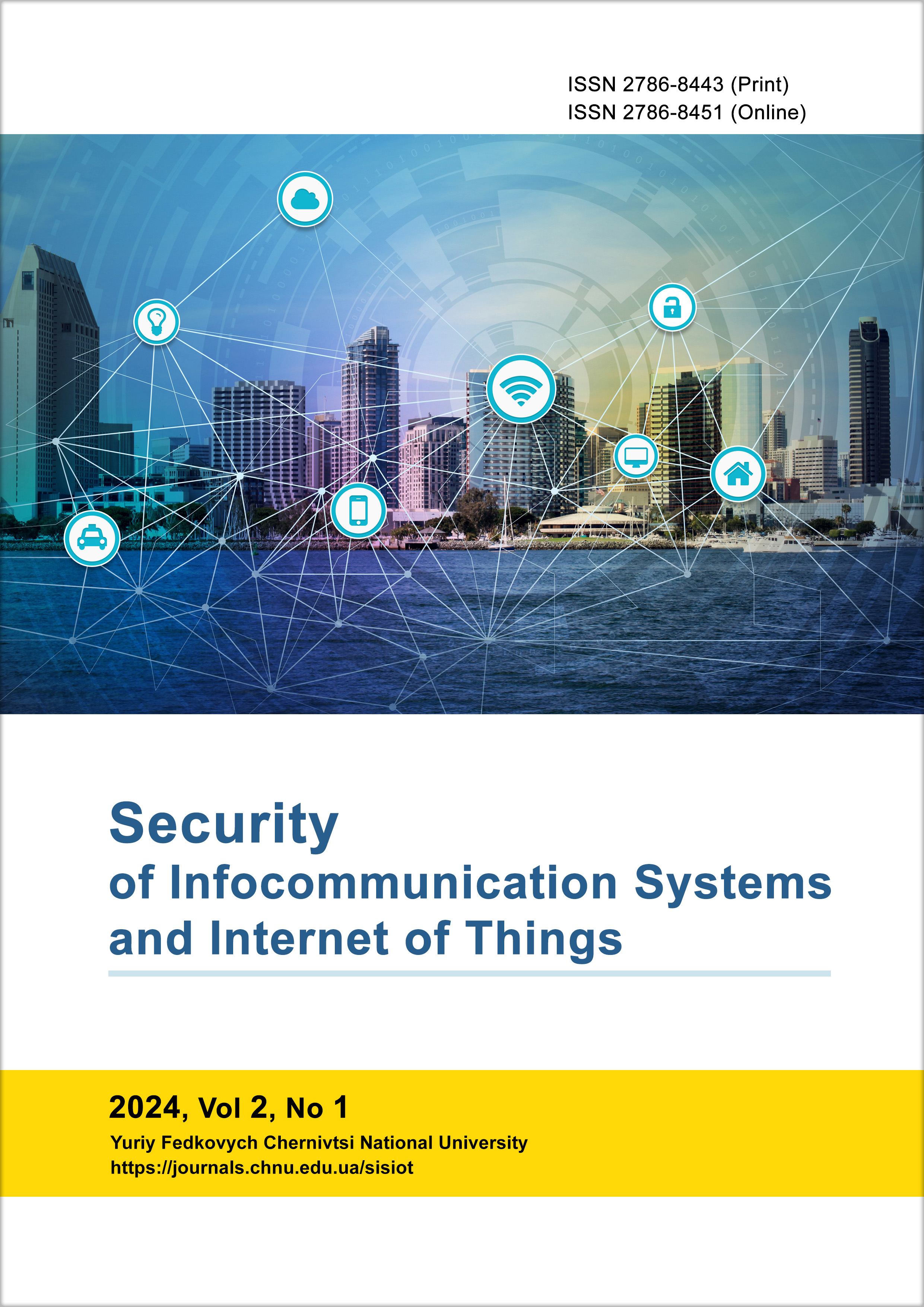Analysis of Wireless Communication Protocols for Enhancing the Efficiency of Cognitive Telecommunications Networks Functionality
DOI:
https://doi.org/10.31861/sisiot2024.1.01005Keywords:
cognitive radio, IEEE protocols, standards, specifications, adaptabilityAbstract
In the study, modern protocols and their specifications were analyzed and systematized. Advantages and disadvantages were identified, which are necessary for expanding the application possibilities of cognitive radio systems. Through the analysis of the technical characteristics of cognitive radio systems, the main factors of stagnation in various technological capabilities were discovered. It has been proven that IEEE protocols provide a critically important foundation for the standardization of cognitive radio systems, facilitating their compatibility and efficient use of the radio frequency spectrum. It has been substantiated that cognitive radio systems include optimization subsystems to ensure reliable communication. Specifically, the cognitive analysis subsystem is essential for effective monitoring of the radio frequency spectrum, enabling frequency adaptation in response to spectrum occupancy. The cognitive decision-making subsystem ensures optimal resource use through rational frequency distribution and transmission parameter adjustment. Adaptation and routing play a key role in ensuring reliable data exchange, while resource management and security measures strengthen the system's integrity and protection. The research demonstrated that the multi-level integration of subsystems opens new possibilities for enhancing the efficiency of radio frequency spectrum use in dynamically changing conditions. Thus, the implementation of modern protocols and technologies in cognitive radio systems is an important step towards creating more flexible and adaptive networks capable of effectively responding to changing conditions and user requirements. The analysis presented in the article demonstrates the necessity and effectiveness of applying innovative wireless communication protocols. These protocols significantly enhance throughput capacity and spectral efficiency, which, in turn, contribute to the optimization of network operations in "smart radio" systems across various applications – from military to commercial.
Downloads
References
C. Cordeiro et al., "IEEE 802.22: The First Worldwide Wireless Standard Based on Cognitive Radios," in First IEEE International Symposium on New Frontiers in Dynamic Spectrum Access Networks, 2005. DySPAN 2005, 2005, pp. 328-337. doi: 10.1109/DYSPAN.2005.1542649.
H. Shiang and M. van der Schaar, "Distributed Resource Management in Multi-Hop Cognitive Radio Networks for Delay Sensitive Transmission," IEEE Transactions on Vehicular Technology, vol. 58, no. 2, pp. 941–953, 2009.
Wang, Z., Chen, Z., Xia, B., Luo, H. “Modeling and Bandwidth Allocation of Cognitive Relay Networks.” In Proceedings of the 2016 IEEE/CIC International Conference on Communications in China (ICCC), 2016, pp. 14–16.
A. R. Rana, J. Kim, and B.-S. Kim, "Named Data Networking for Cognitive Radio Ad Hoc Networks," Mobile Information Systems, vol. 2015, pp. 3–12.
F. K. Mammadov, "New Approach to Book Cipher: Web Pages as a Cryptographic Key," Advanced Information Systems, vol. 7, no. 1, pp. 59-65, 2023.
O. Shefer, O. Laktionov, V. Pents, A. Hlushko, and N. Kuchuk, "Practical Principles of Integrating Artificial Intelligence into the Technology of Regional Security Predicting," Advanced Information Systems, vol. 8, no. 1, pp. 86-94, 2024.
M. Srilatha, R. Hemalatha, and K. S. Ramesh, "An Improved Technique to Mitigate Interference Between Adjacent Bands in Cognitive Radio System," in Proceedings of the 7th IEEE International Advanced Computing Conference (IACC '17), 2017, pp. 156–159. Institute of Electrical and Electronics Engineers (IEEE).
A. Poroshenko and A. Kovalenko, "Optimization of a Basic Network in Audio Analytics Systems," Advanced Information Systems, vol. 7, no. 1, pp. 23–28, 2023, National Technical University «Kharkiv Polytechnic Institute».
K. K. Ho-Van, "Influence of Channel Information Imperfection on Outage Probability of Cooperative Cognitive Networks with Partial Relay Selection," Wireless Personal Communications, vol. 94, no. 4, pp. 89–91, 2017.
A. A. Neghabi, N. Jafari Navimipour, M. Hosseinzadeh, and A. Rezaee, "Load Balancing Mechanisms in the Software Defined Networks: A Systematic and Comprehensive Review of the Literature," IEEE Access, vol. 6, pp. 1–21, 2018.
Y. Y. Obikhod, V. Lysechko, Y. Sverhunova, O. Zhuchenko, et al., "Improvement of the Cognitive Radio System Area Management Method Using Neural Networks," Eastern-European Journal of Enterprise Technologies, vol. 4/9 (88), pp. 22-28, 2017.
P. Geete and M. Motta, "Analysis of Different Spectrum Sensing Techniques in Cognitive Radio Network," International Research Journal of Engineering and Technology (IRJET), vol. 2, pp. 573-577, 2015.
J. L. Burbank, "Security in Cognitive Radio Networks: The Required Evolution in Approaches to Wireless Network Security," in 3rd International Conference on Cognitive Radio Oriented Wireless Networks and Communications (Crown-Com), 2008, pp. 1–7.
O. Poliarush, S. Krepych, and I. Spivak, "Hybrid Approach for Data Filtering and Machine Learning Inside Content Management System," National Technical University «Kharkiv Polytechnic Institute», Advanced Information Systems, vol. 7, no. 4, pp. 70-74, 2023.
L. Miao, Z. Sun, and Z. Jie, "The Parallel Algorithm Based on Genetic Algorithm for Improving the Performance of Cognitive Radio," Wireless Communications and Mobile Computing, vol. 2, 2015.
Published
Issue
Section
License
Copyright (c) 2024 Security of Infocommunication Systems and Internet of Things

This work is licensed under a Creative Commons Attribution 4.0 International License.









